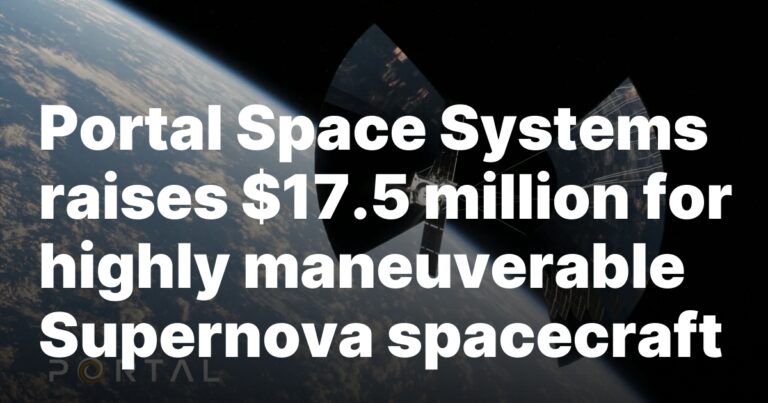WASHINGTON — Portal Space Systems has raised $17.5 million in a seed round that will allow the venture to develop and demonstrate a highly maneuverable spacecraft.
Portal announced April 3 the completion of an oversubscribed seed round led by AlleyCorp, an early-stage investor. Also participating in the round were Mach33, FUSE, First In, TFX, Offline Ventures, Atypical and what Portal called other strategic investors.
The company said the funding will allow it to complete development of Supernova, a spacecraft that uses solar thermal propulsion (STP) to allow it to rapidly move between orbits. The funding will also support the launch of the first Supernova spacecraft on a demonstration mission in mid-2026.
“This funding is a testament to the increasing recognition that maneuverability at will is the critical need in both defense and commercial space operations,” Jeff Thornburg, chief executive of Portal Space Systems, said in a statement. “With the support of our investors, we are moving from development to flight, bringing this capability to missions that need it most.”
The company emerged from stealth nearly a year ago with plans to develop Supernova. The key technology for the vehicle is its STP system, which provides performance similar to that proposed for nuclear thermal propulsion systems, but by using sunlight, rather than a nuclear reactor, as the energy source. That offers the potential for several kilometers per second of delta-V, or change in velocity.
Portal says that Supernova, with its STP system, can move from low Earth orbit to medium Earth orbit in minutes, and from LEO to geostationary orbit in hours. The company seeks to tap into growing interest, particularly in the national security space community, for the ability to move quickly and frequently in support of what’s widely known as “dynamic space operations.”
“It’s a high delta-V capable machine that really addresses both commercial and military mobility needs on orbit right now,” Thornburg said in an interview last year as the company emerged from stealth.
That approach won over investors. “We were particularly impressed by their Supernova spacecraft, which will improve maneuverability in space by over an order of magnitude, while also significantly extending operational lifespans by enabling a more sustained presence in space,” said Brannon Jones, an investor at AlleyCorp and former SpaceX engineer, in a statement.
Brendan Wales, founding partner of FUSE, said his fund was a late addition to the round. “With their propulsion system, the future of space will turn from a relatively static ecosystem to one that is dynamic, expressive and action oriented,” he said. “We had been tracking the company from afar for many months prior to our first meeting in mid-March. Once we met Jeff and the rest of the team, we knew we had to be a part of this round and invested a large check prior to the final close.”
Since announcing Supernova last April, Portal says it has advanced the technology for its STP system, including additively manufacturing a heat exchanger/thruster for it. The company has hired key engineering and management personnel and moved into an 8,000-square-foot headquarters in the Seattle suburb of Bothell, Washington, that includes propulsion testing infrastructure. The company also says it has won $2 million in government funding, but did not disclose specifics.
Portal expects to complete a critical design review for Supernova in the second quarter, as well as perform full-scale testing of the STP system thruster. Vehicle integration will begin in the fourth quarter ahead of a launch in mid-2026. The company plans to then scale up production of Supernova vehicles.

